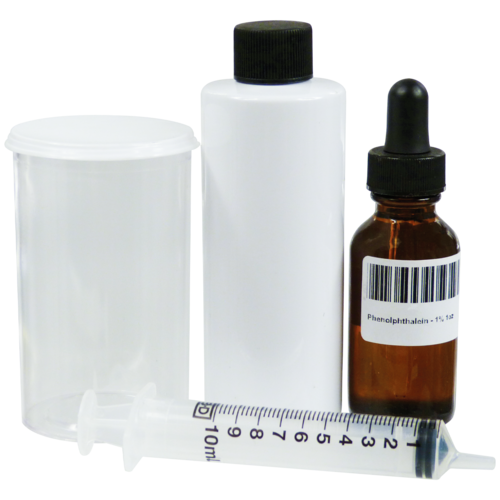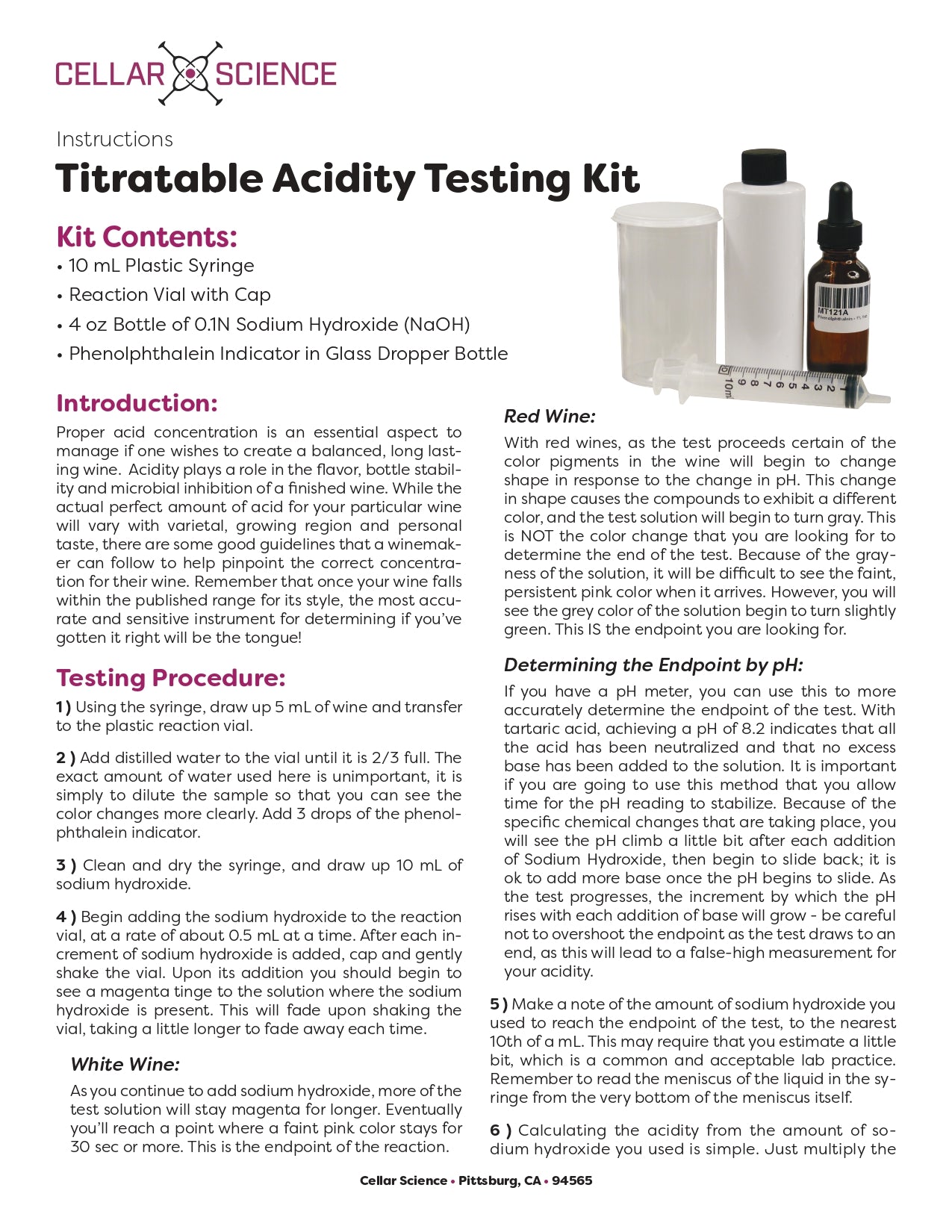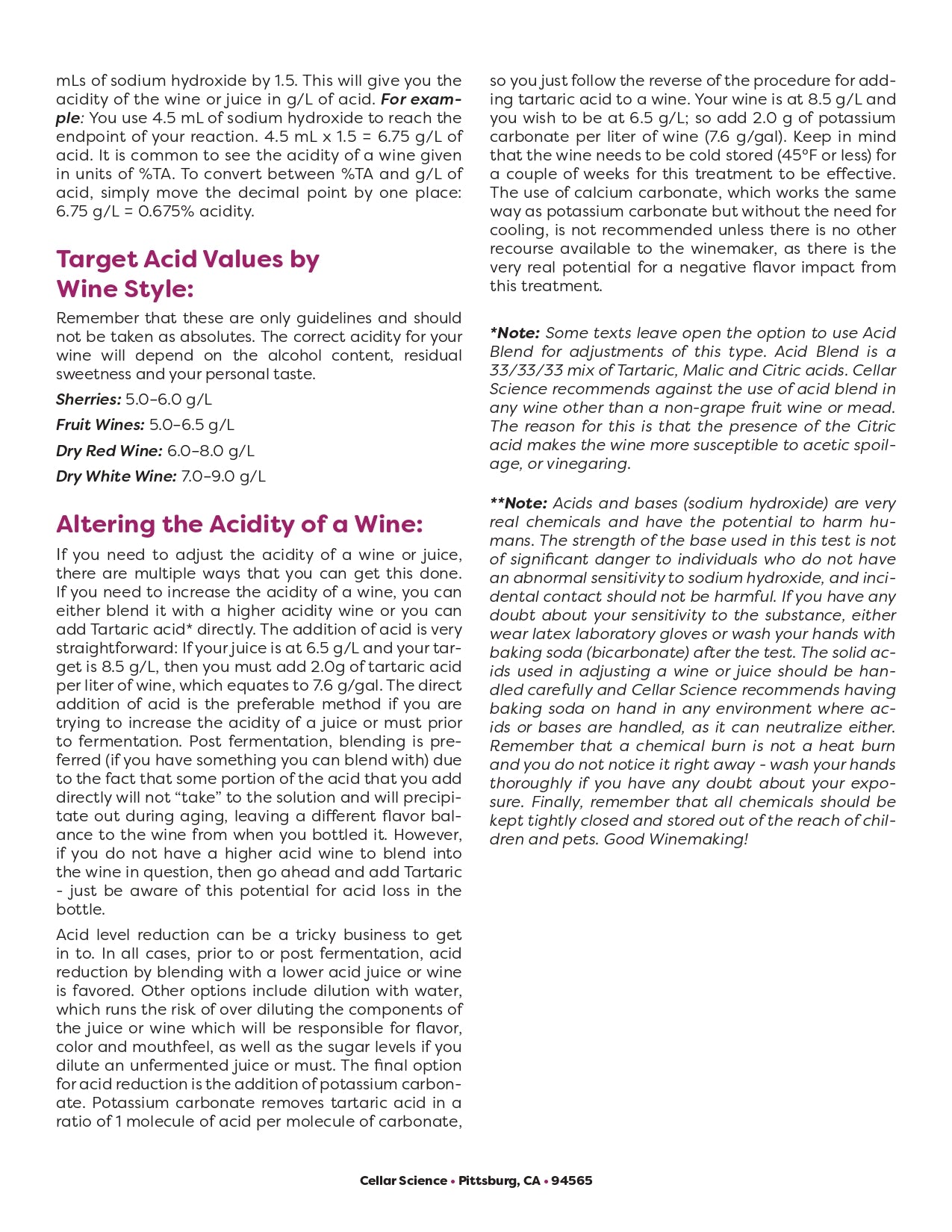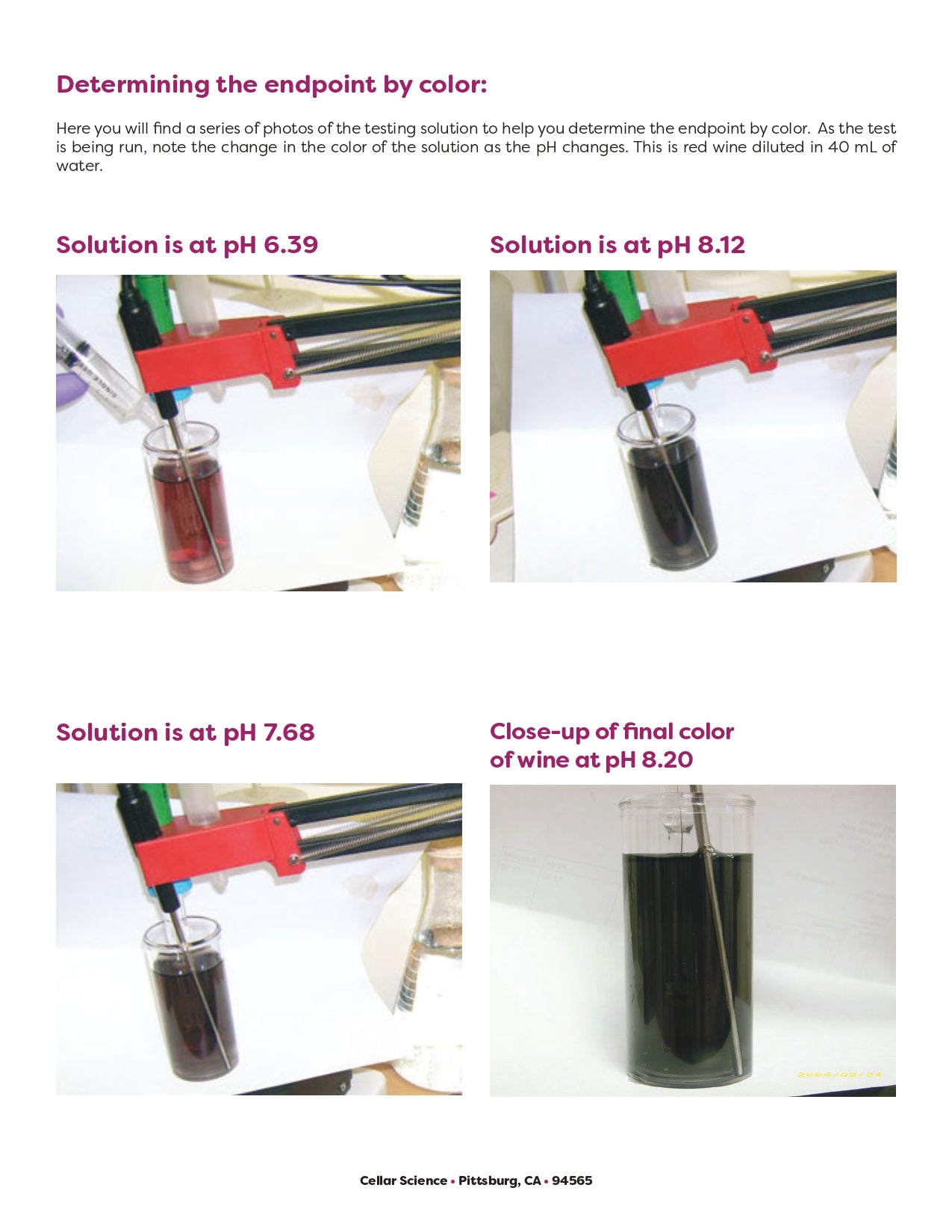Description
Description
Used to determine the Total Acidity in a wine, the Acid Test Kit is an invaluable tool for any home winemaker. Total Acidity measurements are important to winemaking because the correct amount of acidity is key to maintaining a wine which is balanced in flavor and stable for ageing.
Kit Contents:
- Large Reaction Vial
- 10mL Syringe
- 4oz of Sodium Hydroxide Reagent
- Phenolphthalein Indicator in 1oz Dropper Jar
Reagent Stability Information:
- Sodium Hydroxide Solution - 0.1 Normal (2 year shelf life cool & closed, 3 month shelf life cool and opened)
- Phenolphthalein Indicator - 1.0% (5 year + Shelf life)




